
Cocytius antaeus, the giant sphinx, is a moth of the family Sphingidae. The species was first described by Dru Drury in 1773.
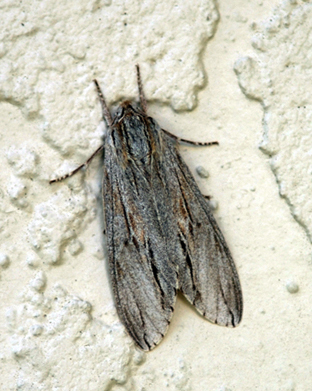
Isoparce cupressi, the baldcypress sphinx or cypress sphinx, is a moth of the family Sphingidae.

Sphinx asellus, the asellus sphinx moth, is a moth of the family Sphingidae. The species was first described by Walter Rothschild and Karl Jordan in 1903. It is known from pinyon-juniper woodland and similar arid areas in the US states of Colorado, Nevada, Utah, extreme south-western Wyoming, Arizona, New Mexico and south-western Texas.
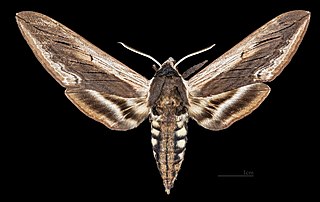
Sphinx drupiferarum, the wild cherry sphinx, is a moth of the family Sphingidae. The species was first described by James Edward Smith in 1797.

Lapara bombycoides, the northern pine sphinx is a moth of the family Sphingidae. The species was first described by Francis Walker in 1856.
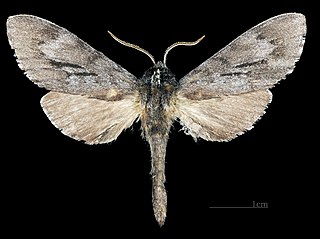
Lapara coniferarum, the southern pine sphinx, is a species of sphinx moth. It was first described by James Edward Smith in 1797. The species is listed as threatened in Connecticut.
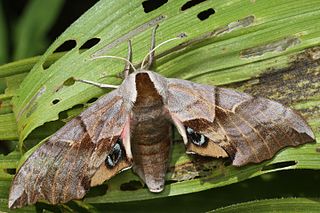
Smerinthus saliceti, the Salicet sphinx, is a moth of the family Sphingidae. The species was first described by Jean Baptiste Boisduval in 1875.
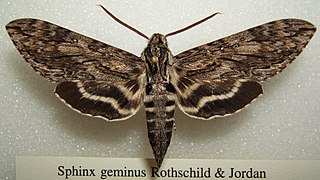
Lintneria geminus, the gemmed sphinx, is a moth of the family Sphingidae. The species was first described by Walter Rothschild and Karl Jordan in 1903. It is found from Mexico to Honduras and Nicaragua with an occasional stray into Texas.
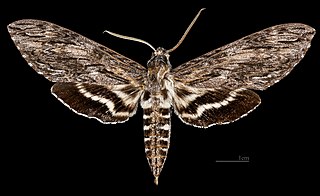
Lintneria lugens is a moth of the family Sphingidae.

Lintneria merops is a moth of the family Sphingidae.

Lintneria separatus, the separated sphinx, is a moth of the family Sphingidae. The species was first described by Berthold Neumoegen in 1885. It is found from Colorado south through New Mexico and Arizona to Veracruz and Hidalgo in Mexico.
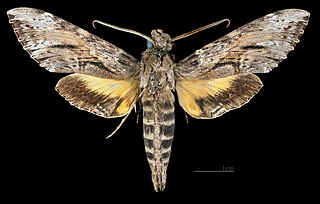
Isognathus rimosa, the rimosus sphinx, is a moth of the family Sphingidae. The species was first described by Augustus Radcliffe Grote in 1865.
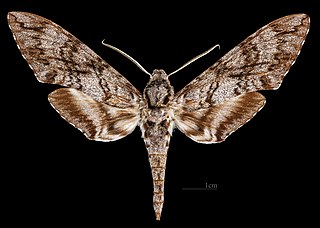
Manduca corumbensis is a moth of the family Sphingidae.

Manduca dalica is a moth of the family Sphingidae.

Manduca diffissa is a moth of the family Sphingidae first described by Arthur Gardiner Butler in 1871. It is known from most of South America.

Erinnyis oenotrus, the Oenotrus sphinx, is a moth of the family Sphingidae.

Eumorpha analis is a moth of the family Sphingidae.

Manduca manducoides is a moth of the family Sphingidae.

Sphinx chisoya, the chisoya sphinx, is a moth of the family Sphingidae. It is known from tropical and subtropical lowlands from southern Texas to Mexico.
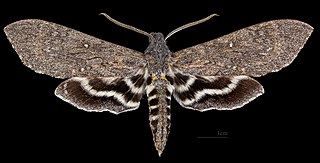
Lintneria maura is a moth of the family Sphingidae.























